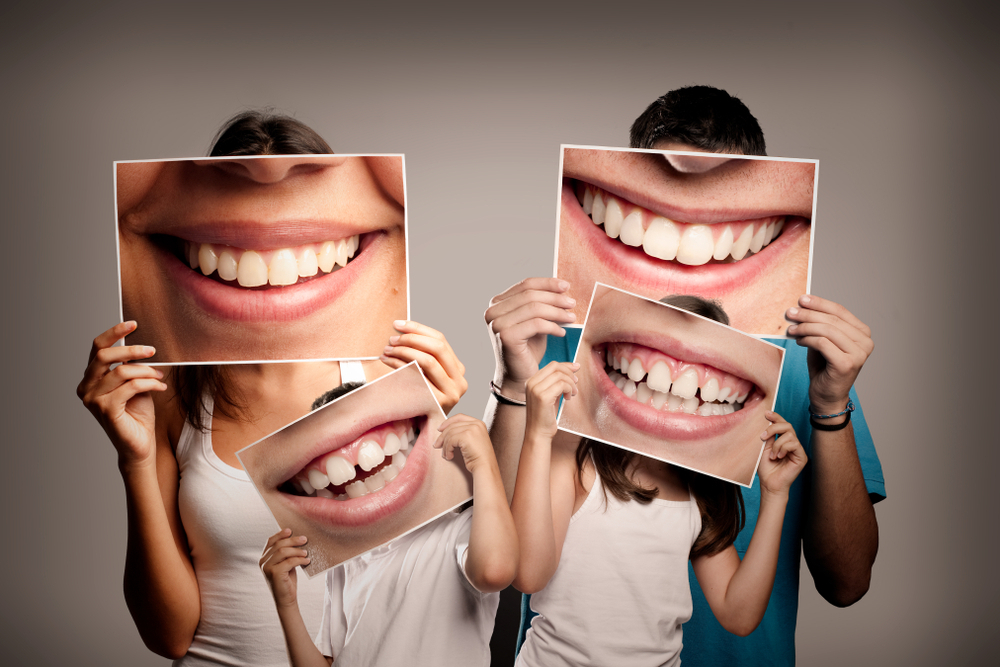Legacy Orthodontics - The Facts
Legacy Orthodontics - The Facts
Blog Article
Unknown Facts About Legacy Orthodontics
Table of ContentsThe 45-Second Trick For Legacy OrthodonticsRumored Buzz on Legacy OrthodonticsThe smart Trick of Legacy Orthodontics That Nobody is DiscussingThe 30-Second Trick For Legacy OrthodonticsThe 9-Minute Rule for Legacy Orthodontics
In enhancement, we provide flexible treatment timetables, adaptable repayment options and an enjoyable, pleasurable experience.An orthodontist is a dental practitioner trained to diagnose, protect against, and deal with teeth and jaw irregularities. Orthodontists work with individuals of all ages, from children to grownups.
Malocclusion, or misaligned teeth, can cause dental problems, including dental caries, periodontal condition, and tough or uncomfortable eating. Yet not everybody is birthed with straight teeth. If you have a bad bite or big spaces between your teeth, you may intend to speak with a dental expert concentrating on orthodontic care.
Legacy Orthodontics Things To Know Before You Get This
( Photo Credit History: DigitalVision/Getty Images) Orthodontists make use of taken care of and removable oral tools, like braces, retainers, and bands, to alter the placement of teeth in your mouth. Orthodontic treatment is for oral irregularities, consisting of: Jagged teethBite problems, like an overbite or an underbiteCrowded teeth or teeth that are as well much apartJaw misalignmentThe objective of orthodontic therapy is to improve your bite.
While you could believe of orthodontists as primarily for children or teens who require dental braces, they can remedy dental issues at any age. Orthodontists go to university, dental institution, and orthodontic institution.
All orthodontists are dental professionals, but not all dentists are orthodontists. Orthodontic residency programs use intensive, focused instruction for oral specialists. They focus on 2 areas: Exactly how to appropriately and securely move teeth How to correctly guide growth in the teeth, jaw, and faceOnce an orthodontist has finished training, they have the choice to come to be board licensed.
The smart Trick of Legacy Orthodontics That Nobody is Talking About
Misalignment, or malocclusion, is the most usual reason people see an orthodontist. It is genetic and is the result of size distinctions between the top and lower jaw or in between the jaw and teeth. Malocclusion causes tooth congestion, a misshapen jaw, or uneven bite patterns. Malocclusion is normally treated with: Your orthodontist attaches steel, ceramic, or plastic square bonds to your teeth.
If you have only minor malocclusion, you may have the ability to make use of clear braces, called aligners, rather than standard braces (https://www.evernote.com/shard/s367/sh/122b25c0-2300-ab15-4428-83571f0ae5a5/Un0837fCLpdWXb-pH7uoIPQzItTxLBIpTfSkXiQcXchu7Rs2zV31_dJROQ). Some people need a headgear to assist relocate teeth into line with pressure from outside the mouth. After braces or aligners, you'll need to use a retainer. A retainer is a custom-made gadget that keeps your teeth in place.
They can create extra space in the mouth without having to draw teeth. Orthodontists utilize wires, medical screws, or plates to support your jaw bone.
You might need to see an orthodontist if you have: Crowding or not sufficient space for all of your teethOverbite, when your upper teeth come over your bottom teethUnderbite, when your base teeth are too much forwardSpacing or concerns with gapsCrossbite, which is when your top teeth fit behind your bottom teeth when your mouth is closedOpen bite or a read what he said vertical void between your front base and upper teethMisplaced midline, when the center of your bottom and upper teeth don't line up Correcting a dental malocclusion can: Make attacking, eating, and talking easierImprove the balance of our face and your total appearanceEase pain from temporomandibular joint problemsSeparate your teeth and make them simpler to cleanse, helping stop dental cavity or cavities It's typically a dental practitioner who first notices misaligned teeth during a regular exam.
Not known Incorrect Statements About Legacy Orthodontics

During your very first orthodontic consultation, you'll likely have: A dental examPhotos taken of your face and smileDental X-raysPanoramic (360 level) X-rays of your face and headImpressions to create molds of your teethThese tests will certainly aid your orthodontist recognize exactly how to proceed with your therapy. leesburg orthodontics. An orthodontist is a dental practitioner who's had training to treat your teeth and jaw
An orthodontist is concentrated on your bite, so something like a chipped tooth would certainly be taken care of by a dental expert. Orthodontists are focused on your bite, or the means your teeth fit with each other, and the straightness of your teeth.
Ever before questioned just how stars constantly seem to have flawlessly aligned teeth? The solution typically exists in the knowledgeable hands of an orthodontist. What specifically does an orthodontist do? Orthodontists are oral professionals who concentrate on dealing with abnormalities in the teeth and jaws. Their proficiency goes past simply producing a beautiful smile; it extends to improving your total dental wellness and function.
The Legacy Orthodontics Statements

While braces are one of the most frequently identified orthodontic therapy, orthodontists have a varied toolkit at their disposal. The specific strategy picked relies on the seriousness of the situation, the patient's age, and private choices. These reliable dental braces utilize a system of brackets bonded to the teeth and attached by cords.
Clear aligners, like Invisalign, are a preferred choice for people seeking a much more discreet therapy option. These detachable trays are personalized to progressively change the teeth's setting. Headwear might be used in conjunction with braces or aligners to use extra targeted forces, particularly for correcting jaw disparities. In instances of slim jaws, palatal expanders can be made use of to produce room for appropriate tooth positioning.
Report this page